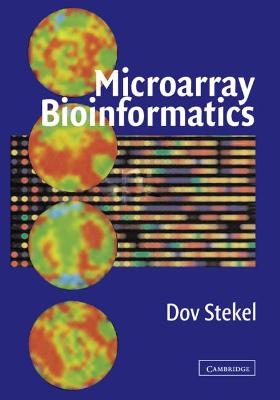
Microarray Bioinformatics
Seiten
2003
Cambridge University Press (Verlag)
978-0-521-52587-9 (ISBN)
Cambridge University Press (Verlag)
978-0-521-52587-9 (ISBN)
- Keine Verlagsinformationen verfügbar
- Artikel merken
DNA microarrays have revolutionised molecular biology and are becoming a standard tool in the field. Written for those from both laboratory and bioinformatics backgrounds, this book is a comprehensive guide to all of the mathematics, statistics and computing necessary to successfully carry out and analyze DNA microarray experiments.
This book is a comprehensive guide to all of the mathematics, statistics and computing you will need to successfully operate DNA microarray experiments. It is written for researchers, clinicians, laboratory heads and managers, from both biology and bioinformatics backgrounds, who work with, or who intend to work with microarrays. The book covers all aspects of microarray bioinformatics, giving you the tools to design arrays and experiments, to analyze your data, and to share your results with your organisation or with the international community. There are chapters covering sequence databases, oligonucleotide design, experimental design, image processing, normalisation, identifying differentially expressed genes, clustering, classification and data standards. The book is based on the highly successful Microarray Bioinformatics course at Oxford University, and therefore is ideally suited for teaching the subject at postgraduate or professional level.
This book is a comprehensive guide to all of the mathematics, statistics and computing you will need to successfully operate DNA microarray experiments. It is written for researchers, clinicians, laboratory heads and managers, from both biology and bioinformatics backgrounds, who work with, or who intend to work with microarrays. The book covers all aspects of microarray bioinformatics, giving you the tools to design arrays and experiments, to analyze your data, and to share your results with your organisation or with the international community. There are chapters covering sequence databases, oligonucleotide design, experimental design, image processing, normalisation, identifying differentially expressed genes, clustering, classification and data standards. The book is based on the highly successful Microarray Bioinformatics course at Oxford University, and therefore is ideally suited for teaching the subject at postgraduate or professional level.
1. Microarrays: making them and using them; 2. Sequence databases for microarrays; 3. Computer design of oligonucleotide probes; 4. Image processing; 5. Normalization; 6. Measuring and quantifying microarray variability; 7. Analysis of differentially expressed genes; 8. Analysis of relationships between genes, tissues or treatments; 9. Classification of tissues and samples; 10. Experimental design; 11. Data storage, standards and sharing; Appendix A. Glossary.
| Erscheint lt. Verlag | 8.9.2003 |
|---|---|
| Zusatzinfo | 58 Tables, unspecified; 8 Plates, color; 4 Halftones, unspecified; 112 Line drawings, unspecified |
| Verlagsort | Cambridge |
| Sprache | englisch |
| Maße | 178 x 248 mm |
| Gewicht | 612 g |
| Themenwelt | Informatik ► Weitere Themen ► Bioinformatik |
| Naturwissenschaften ► Biologie ► Genetik / Molekularbiologie | |
| Naturwissenschaften ► Biologie ► Mikrobiologie / Immunologie | |
| ISBN-10 | 0-521-52587-X / 052152587X |
| ISBN-13 | 978-0-521-52587-9 / 9780521525879 |
| Zustand | Neuware |
| Haben Sie eine Frage zum Produkt? |
Mehr entdecken
aus dem Bereich
aus dem Bereich
Buch | Softcover (2021)
Springer Spektrum (Verlag)
49,99 €
Grundlagen, Algorithmen, Anwendungen
Buch | Hardcover (2022)
Wiley-VCH (Verlag)
79,90 €


